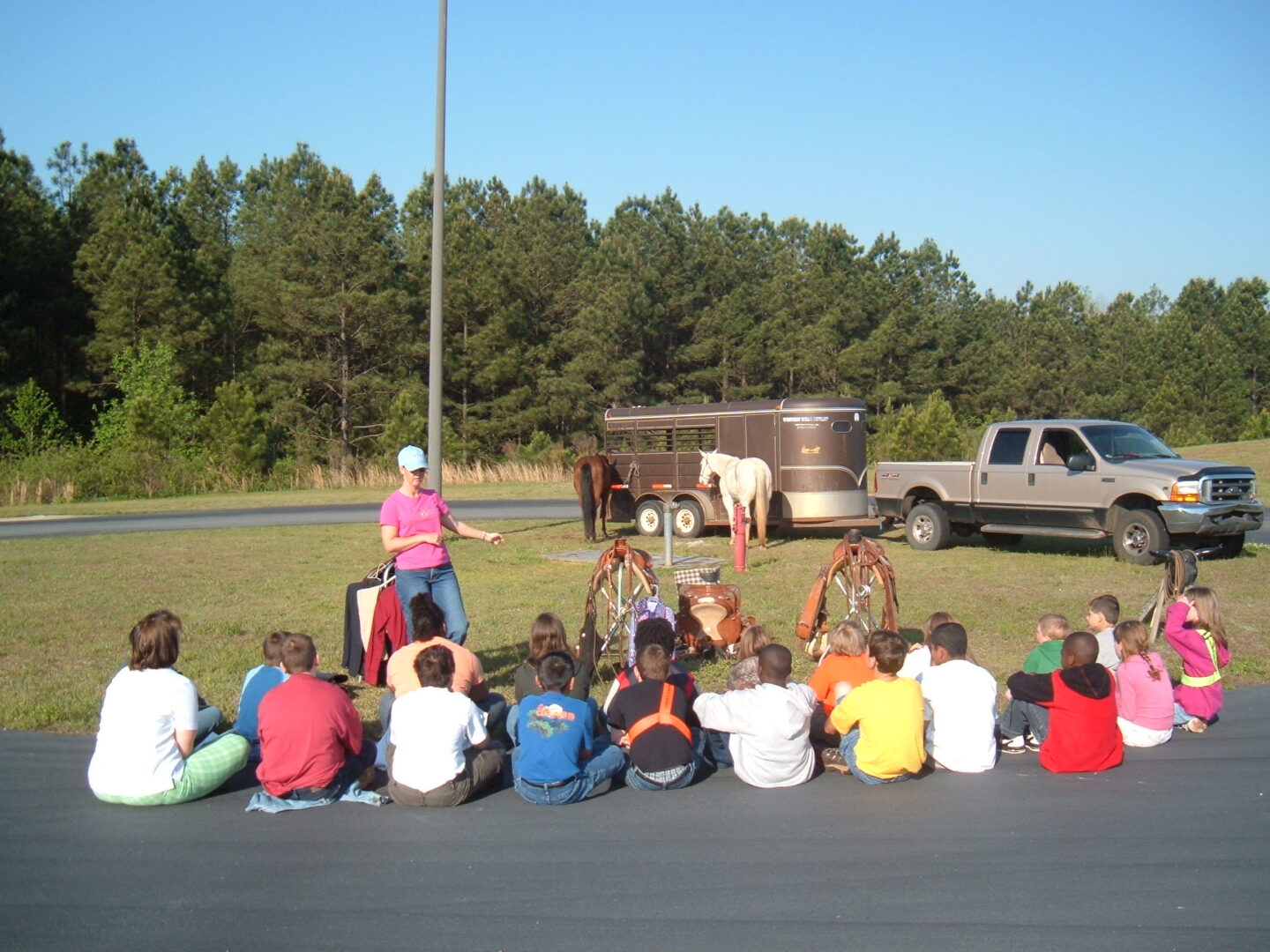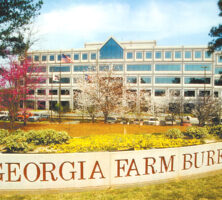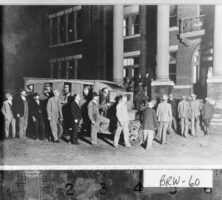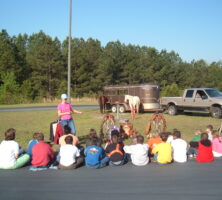With more than 200,000 “member families,” the Georgia Farm Bureau (GFB) is Georgia’s largest and most powerful general farm organization. The GFB is affiliated nationally with the American Farm Bureau (AFB). Both the state and national organizations have as their goals political advocacy and member services.
The National Organization
Small local organizations calling themselves “farm bureaus” began forming as early as 1911. With the proliferation of such organizations, state-level farm bureaus were formed as early as 1915. In 1919 these state-level organizations affiliated nationally as the AFB. From its earliest years the AFB’s primary goal was political advocacy on behalf of farmers. Later the state and national organizations added member services, ranging from cooperative marketing to life insurance.
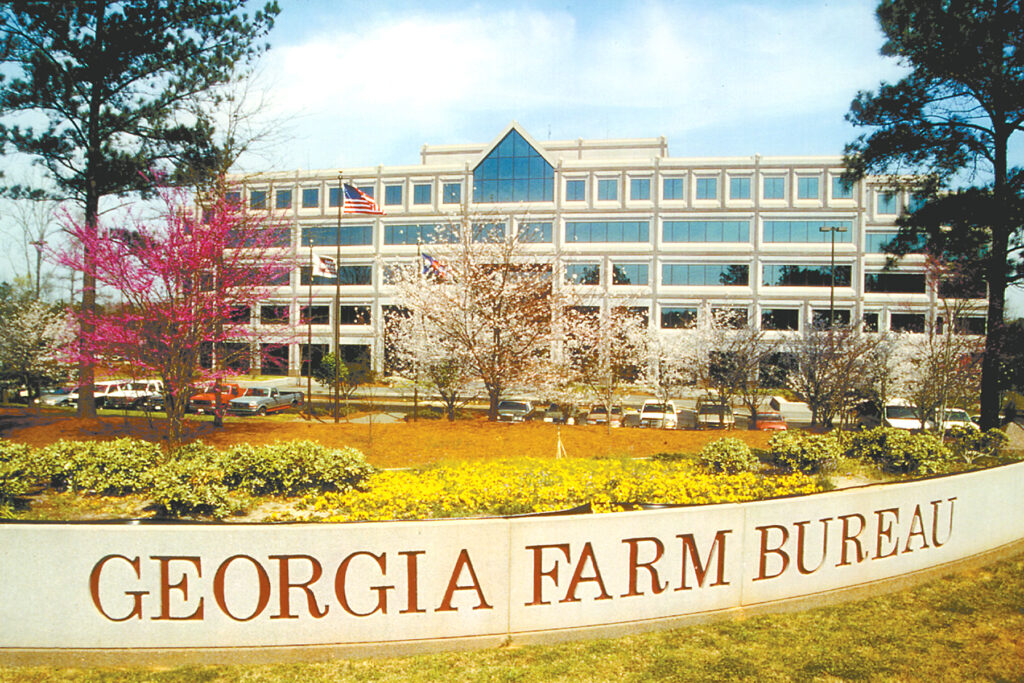
Courtesy of Georgia Farm Bureau
Members of the AFB have always been most active at the county and state levels. County-level organizations provide input to state-level representatives, who in turn meet at a national convention that dictates official AFB policy.
The growth of local, state, and national farm bureaus is difficult to separate from the growth of the Agricultural Extension Service, known in Georgia as the Cooperative Extension Service. The federal Smith-Lever Act of 1914 created the Extension Service with the purpose of extending the educational function of the nation’s land-grant agricultural schools to farmers through county agents. Frequently these county agents organized farmers into farm bureaus. Additionally, state and county farm bureaus frequently contributed funding to the Extension Service, often effectively paying the salaries of county agents. This arrangement often led to the false impression that the AFB was a governmental or quasi-governmental agency.
In its earliest years the AFB was a strong advocate of “parity.” In the years after World War I (1917-18) farmers became increasingly frustrated as the value of their products continued to fall while the value of the products they purchased continued to rise. Parity sought to restore the purchasing power of farmers to what it had been from 1909 to 1914, a particularly prosperous time for farmers.
With the coming of the Great Depression and the advent of U.S. president Franklin D. Roosevelt’s New Deal, the AFB became an ardent advocate of a number of New Deal programs. It saw a significant victory with the passage in 1933 of the Agricultural Adjustment Act (AAA), which sought to raise the value of farm products by limiting production. The AFB was especially pleased with the AAA legislation because the Extension Service, and by association the AFB, was vital in the program’s early administration.
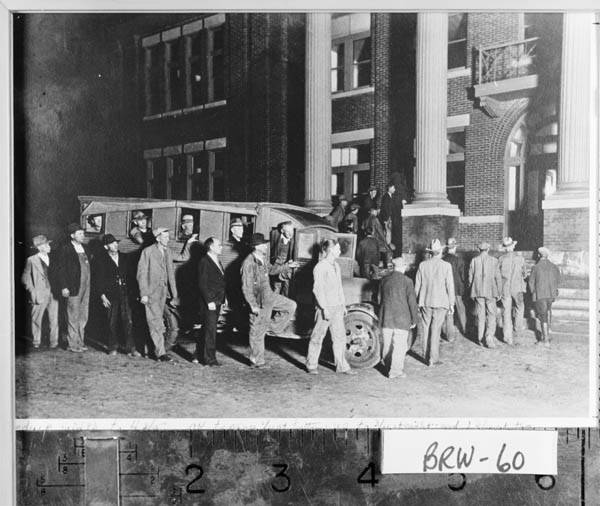
Courtesy of Georgia Archives.
As the New Deal progressed and the U.S. Department of Agriculture increasingly sought to centralize the administration of farm programs, the AFB found itself at odds with Roosevelt and his programs. The bureau opposed such centralized organizations as the Farm Security Administration, which the AFB perceived as too radical. Moreover, the AFB recognized that it had less of a chance of influencing (or perhaps controlling) programs not administered by the Extension Service.
In the years after the depression the AFB’s positions became increasingly market oriented, and it advocated reducing the use of price supports for agriculture. Lending some credence to the charge that the AFB represented only well-to-do farmers, the organization consistently opposed the unionization of farm laborers. The AFB also began to venture into more specifically political issues, such as when it began to promote anticommunist speakers in the 1950s.
Georgia’s State-Level Organization
In their earliest years farm bureaus were strongest in the Midwest and weakest in the South. It is difficult to pinpoint an exact founding date for the GFB. As with the rest of the nation, informal farm bureaus began to emerge at the county level in Georgia around the activities of the extension agents in the early twentieth century. Established in 1920, the Georgia Farm Bureau Federation was Georgia’s first statewide farm bureau affiliated with the AFB. The difficulties of the depression, however, destroyed this organization. A state-level farm bureau organization emerged again in 1937 in the form of United Georgia Farmers. In 1939 this organization joined the AFB, changing its name to the Georgia Farm Bureau Federation in 1941.
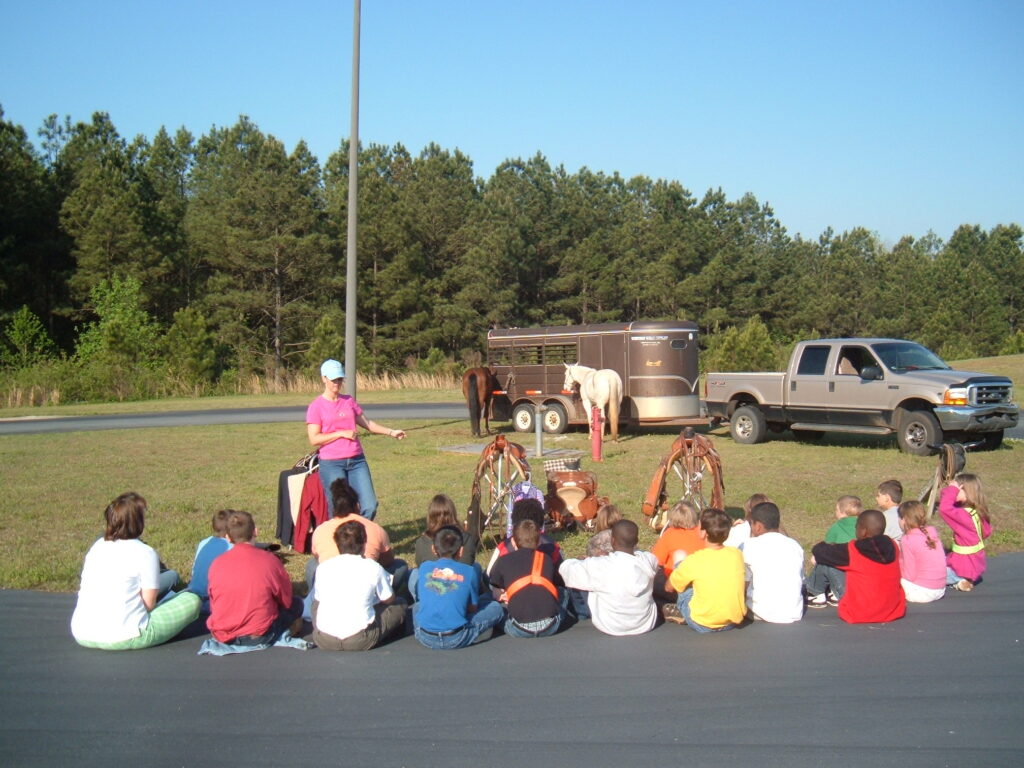
Courtesy of Georgia Farm Bureau
In its early years the GFB and its predecessor organizations focused on such issues as rural electrification, improved rural roads, and the AAA legislation. Largely because of the work of Extension Agents through the AAA, southern farm bureaus quickly caught up in membership to their midwestern counterparts. The GFB frequently led the nation in membership gains during this period.
After the depression the GFB constantly expanded the scope of its activities. Early in its existence the organization began publishing the Georgia Farm Bureau News. By 1951 the GFB had added a radio program to its outreach efforts and eventually added a television program that was carried across the state.
Following the lead of other state farm bureau organizations, the GFB began to focus more exclusively on member services. In 1954 the GFB began offering various forms of insurance through the Cotton States Mutual Insurance Company. In 1961 the GFB became more directly involved in providing insurance to its members with the establishment of the Georgia Farm Bureau Investment Company. In 1964 the GFB organized the Georgia Farm Bureau Marketing Association, the goal of which was “to engage in any activity connected with the marketing, selling, harvesting, preserving, drying, processing, ginning, packing, canning, storing, handling, or utilizing of any agricultural products produced by members of the Marketing Association.”
In recent years the GFB has focused primarily on providing services to farmers that help them compete. It has also continued to add member services not specifically related to farming, such as discounts on automobiles and hotel rooms; real estate, mortgage, and insurance sales; and fee-based financial services, leading critics to claim that an organization cannot simultaneously sell services to farmers while adequately advocating for them.
The GFB positions itself as the “voice of Georgia farmers,” with more than 200,000 member families as of 2019. Membership is open to anyone, and a significant percentage of GFB members are not farmers.
As the number of farmers in Georgia has declined, the GFB has nevertheless remained an influential actor in state affairs.
Agriculture in the Classroom
In addition to addressing the current needs and issues of working farmers, the GFB also invests in the future of the agriculture industry through the Agriculture (or “Ag”) in the Classroom program. Established at the national level by the U.S. Department of Agriculture in 1981, Ag in the Classroom strives to inform all students about the role of agriculture, including conservation and forestry activities, in a modern society. In Georgia the GFB, through its Georgia Agriculture in the Classroom Council, serves as an intermediary between the educational and agricultural spheres by providing K-8 curriculum, teacher training, and information about community resources. The program also offers students the opportunity to explore career options in the agriculture industry.






